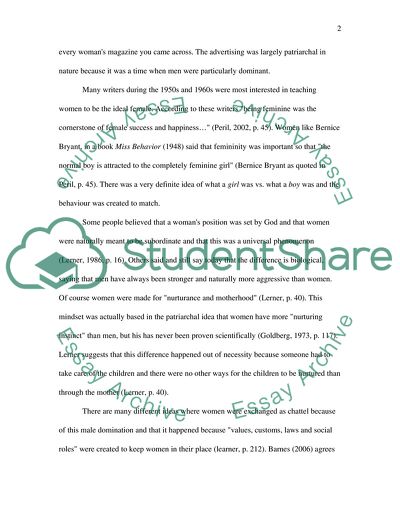Status of Women in Society Essay Example | Topics and Well Written Essays - 1500 words. https://studentshare.org/gender-sexual-studies/1713548-an-analysis-of-literature-relating-to-gender-power-relations
Status of Women in Society Essay Example | Topics and Well Written Essays - 1500 Words. https://studentshare.org/gender-sexual-studies/1713548-an-analysis-of-literature-relating-to-gender-power-relations.


